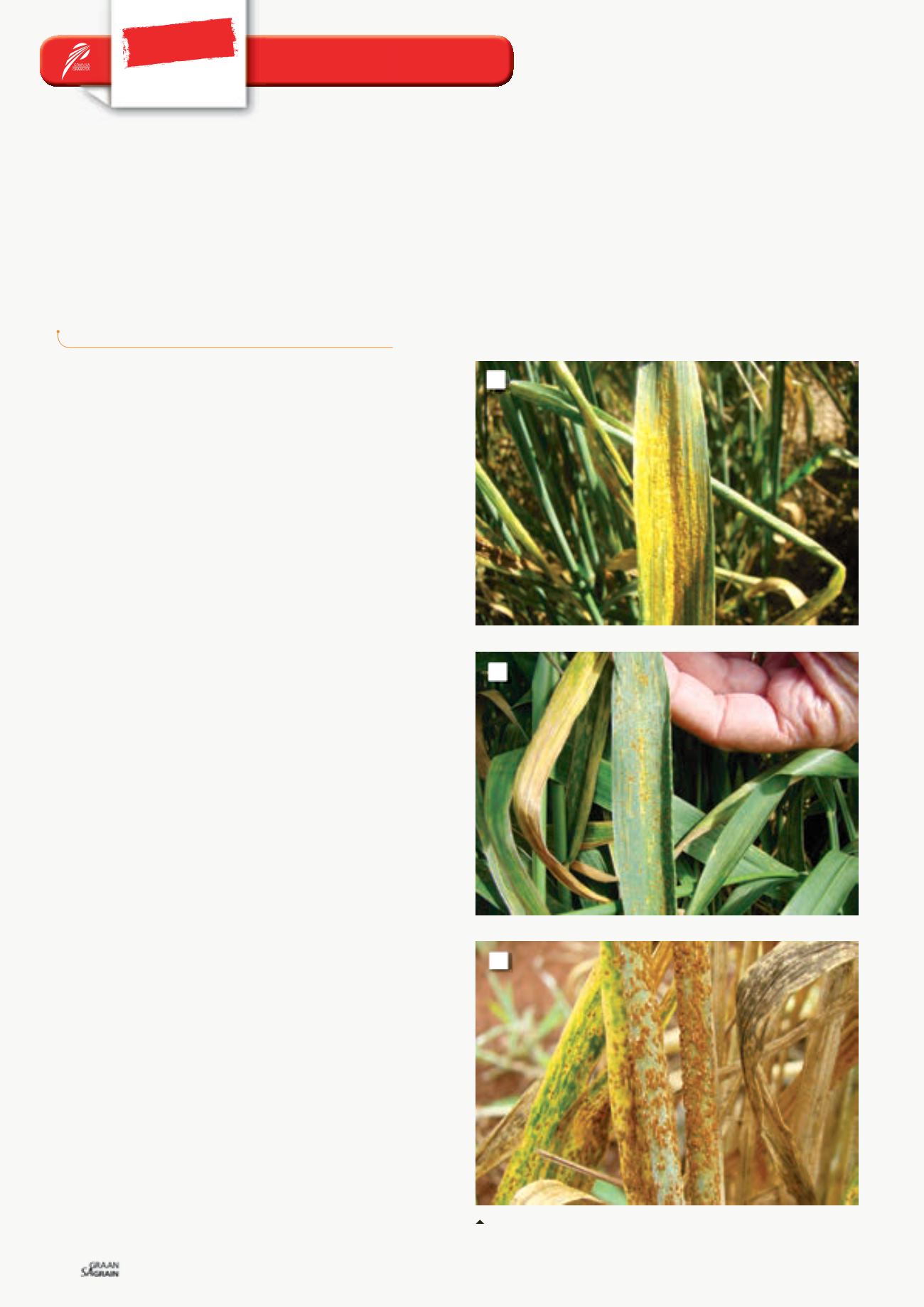

FOCUS
Integrated pest control
Special
September 2015
62
Host plant resistance to wheat rusts:
Cost saving solution reducing
fungicide applications
T
here are three types of rust that infect wheat, and they are
stripe, leaf and stem rust (
Photo 1a - Photo 1c
). The rusts
are obligate parasites and cause damage by increasing tran-
spiration and respiration whilst decreasing photosynthesis.
Wheat rusts, like most fungi, require free water or moisture in order
for the spores to germinate and cause infection. The incidences of
the three rusts are dependent on climatic conditions and can vary
between seasons. Currently, stripe rust is the most problematic in
the summer rainfall area, whilst all three rusts affect wheat produc-
tion in the winter rainfall area.
South African wheat producers currently rely predominantly on the
use of fungicides to control wheat rusts. Fungicide applications may
be required more than once in a season depending on the severity
of rust infections.
Besides the negative implications that fungicides have on the en-
vironment, a reduction in fungicide usage will allow producers to
reduce their input costs resulting in higher profits. The constant use
of fungicides may potentially cause rust pathogens to develop resist-
ance to fungicides in the future.
The use of genetic resistance is an alternative method for rust con-
trol and is overall beneficial to both the environment and producers.
Understanding host plant resistance
There are two modes of resistance that can be categorised as
race-specific resistance and adult plant resistance. Race-specific re-
sistance is also referred to as seedling resistance and this type of
resistance is generally effective at all plant growth stages.
Resistance is conferred by major genes that offer complete resist-
ance to specific rust races and if not deployed strategically, it can
result in the gene being effective for a limited time only, due to the
formation of new rust races (
Figure 1
).
New rust races may occur through mutation or introduction from
a different area or country and can result in resistant cultivars be-
coming susceptible. Adult plant resistance offers partial resistance
against most races and functions mainly at the adult stage.
Seedlings are therefore still susceptible to rust infections. This type
of resistance is based on complex systems resulting in durable re-
sistance that is much longer lasting.
Breeding for rust resistance
A strategy that is currently used by many breeding programmes is to
target the deployment of adult plant resistance in combination with
race-specific genes in an endeavour to secure long lasting durable
resistance against wheat rusts.
Practically this can be challenging as some rust resistance genes
are sometimes located near/close to yield and quality genes, thus
negatively affecting yield and quality. This is further complicated by
KRISHNA NAICKER,
ARC-Small Grain Institute, Bethlehem
Infected wheat plants exhibiting symptoms of (1a) stripe rust,
(1b) leaf rust and (1c) stem rust.
1a
1b
1c

















